Audio calibration microphones are designed to measure and analyse the acoustics of a room, enabling the optimisation of a home theatre or audio system's sound quality.
By detecting various sound frequencies and volumes, these microphones help adjust speaker output to compensate for any distortions or uneven sound distributions, ensuring the listener experiences the best possible audio performance tailored to their specific environment.
Calibration microphones like the MiniDSP UMik-1 and UMik-2 have become essential tools for audio enthusiasts. These devices, though small, play a pivotal role in tuning your audio system to achieve optimal room acoustics and sound quality.
But between the UMik-1 and UMik-2, which one is best suited for your sound calibration needs?
UMik-1 vs UMik-2
The UMik-1 and UMik-2 are precision microphones designed for audio system calibration.
Introduced by MiniDSP, these microphones have become staples in the audio community for their reliability and performance.
The UMik-1, known for its plug-and-play compatibility and precision measurement, has long been the go-to for both novice and experienced users. Its successor, the UMik-2, builds on this foundation with improved technology and features, aiming to set a new standard in audio calibration.

Compatibility with calibration software
One of the key considerations when choosing between the UMik-1 and UMik-2 is their compatibility with popular audio calibration software. Both microphones seamlessly integrate with software like Dirac Live, Room EQ Wizard (REW), and others, making them versatile tools in your audio tuning toolkit.
The UMik-1 is widely recommended for its ease of use with these programs, facilitating accurate room measurements and corrections.
The UMik-2, meanwhile, not only matches this compatibility but also offers enhanced performance features that may offer advantages in certain audio setups.
Usage with Dirac Live
Dirac Live is a sophisticated software used to improve the sound quality of audio systems in different environments. Think of it as a highly-skilled audio technician that can adjust your speakers to work perfectly in any room.
Here's how it works: first, Dirac Live analyses the sound from your speakers by sending out test tones, which are then picked up by the microphone placed in various spots around the room. This process allows Dirac Live to understand how sound waves bounce off walls, furniture, and other surfaces, which can distort or degrade the quality of the audio you hear.
After gathering all this information, Dirac Live then creates a custom correction filter specifically tailored to your room's acoustics. This filter fine-tunes the audio output from your speakers to compensate for any distortions or imbalances caused by the room's layout.
The result? A cleaner, clearer, and more natural sound that's optimally balanced for your specific listening environment.
In simple terms, Dirac Live ensures that your music, movies, and any other audio play back in the way the creators intended, making your home audio experience more immersive and enjoyable, regardless of the acoustics of the space you're in.
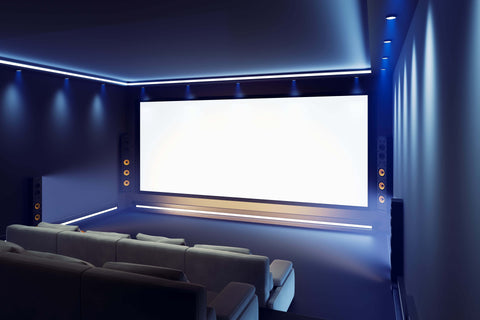
Technical specifications compared
At the heart of the debate between UMik-1 and UMik-2 are their technical specifications which we have broken down for you:
- Sample Rate: The Umik-1 records at a maximum of 48 kHz, while the Umik-2 reaches up to 192 kHz, allowing for more detailed frequency capture and high-resolution (32-bit) audio samples. Although the Umik-2 can record at higher frequencies, it is not designed to be accurate beyond 20kHz.
- Maximum SPL: The Umik-1 supports a higher maximum sound pressure level (SPL) of 133 dB compared to the Umik-2's 125 dB, allowing it to handle louder sounds without distortion. Both microphones are capable of accurately measuring sound pressures up to the calibrated peak levels for home theaters, which include 85 dB for reference, 105 dB for dynamic peaks in main speakers, and 115 dB for subwoofers.
- Sensitivity: Both microphones boast high sensitivity, ensuring that they can accurately pick up a wide range of frequencies. However, the UMik-2 offers a slightly refined sensitivity profile, which may contribute to more nuanced measurements.
- Frequency response: The UMik-1 is celebrated for its flat frequency response, a crucial feature for accurate sound measurement. The UMik-2 continues this tradition, with improvements that extend its accurate response to even higher frequencies.
- Compatibility: Each microphone is designed to be compatible with a range of audio systems, from simple home setups to more complex theatre systems. Both microphones have a USB-C connection and come with a USB-C to USB-A Cable, Apple products and some modern windows laptops may require the purchase of a seperate USB-C to USB-C Cable. The UMik-2’s advanced technology may provide it with a slight edge in more sophisticated configurations.
Setup requirements and user experience
The user experience of these devices is paramount, and both the UMik-1 and UMik-2 score highly on this front.
The UMik-1’s simplicity and reliability make it a favourite among users who want a straightforward path to better sound. Its setup process is intuitive, requiring little more than connecting the microphone to a computer and launching the calibration software.
The UMik-2, while retaining the user-friendly aspect of its predecessor, introduces additional features that cater to a more tech-savvy user. Its improved calibration capabilities and potential for customisation can enhance the calibration process, providing a deeper dive into the nuances of your audio environment.
UMik-1 vs UMik-2: choosing between the two for your setup
Choosing between the UMik-1 and UMik-2 depends largely on your specific needs, your existing setup, and how much you value the latest advancements in calibration technology.
The UMik-1 remains a solid choice for those new to audio calibration or with straightforward setup needs. Its proven track record and ease of use make it a dependable option for achieving excellent sound quality.
For audio enthusiasts looking to push the boundaries of their home theatre or HiFi system, the UMik-2 presents a compelling upgrade. Its advanced features and improved specifications offer the potential for even more precise audio calibration, making it well-suited for intricate setups or users with a keen interest in audio engineering.
Shop both the UMik-1 and UMik-2 now at CHT Solutions
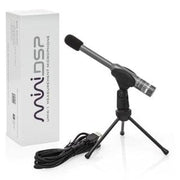
MiniDSP UMIK-1 Calibration Microphone USB For Dirac REW
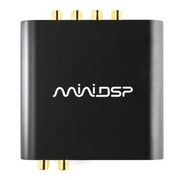
MiniDSP 2x4 HD DSP Processor Ideal For Subwoofer Correction
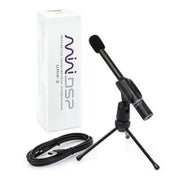
MiniDSP UMIK-2 Calibration Microphone USB For Dirac REW
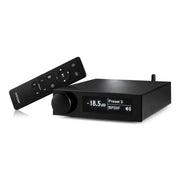
MiniDSP Flex DSP Processor Ideal For Subwoofer Correction + Speaker Tuning
Regardless of your choice, CHT Solutions is ready to provide you with both the tools and the knowledge to elevate your audio experience.
As Australia’s premier destination for home theatre and HiFi solutions, we not only offer the UMik-1 and UMik-2 microphones but also the expertise to help you make the most of them.
Contact our friendly team for personalised advice, or explore a range of audio calibration tools online via our website now.






